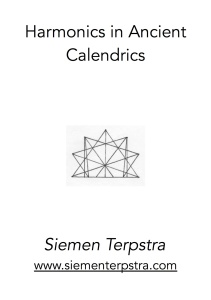 The study of harmonics is usually and rightfully associated with musical tuning theory. However, another appropriate context for this branch of arithmetic is the establishment of a calendar. In both situations, the procedure rests fundamentally on the measurement of a time period for a vibratory event. In the case of tuning theory, these cyclical interactions happen very quickly–hundreds, even thousands of periods per second. Consequently it is convenient to use the concept of frequency (cycles per second) as a descriptive device. In the case of calendrics, we are still measuring a physical vibratory event, but the time periods are very long; consequently, the frequency numbers are very low. It becomes more convenient to express measurements by period. For example, the year cycle is about 365 days long. We could convert this number of days to seconds (a big number!), and the invert the ratio to give us the frequency. In other words, frequency and period stand in inverse relation to each other.
The study of harmonics is usually and rightfully associated with musical tuning theory. However, another appropriate context for this branch of arithmetic is the establishment of a calendar. In both situations, the procedure rests fundamentally on the measurement of a time period for a vibratory event. In the case of tuning theory, these cyclical interactions happen very quickly–hundreds, even thousands of periods per second. Consequently it is convenient to use the concept of frequency (cycles per second) as a descriptive device. In the case of calendrics, we are still measuring a physical vibratory event, but the time periods are very long; consequently, the frequency numbers are very low. It becomes more convenient to express measurements by period. For example, the year cycle is about 365 days long. We could convert this number of days to seconds (a big number!), and the invert the ratio to give us the frequency. In other words, frequency and period stand in inverse relation to each other.
Click on the link to see the article in your browser or right-click to save the file to your drive.